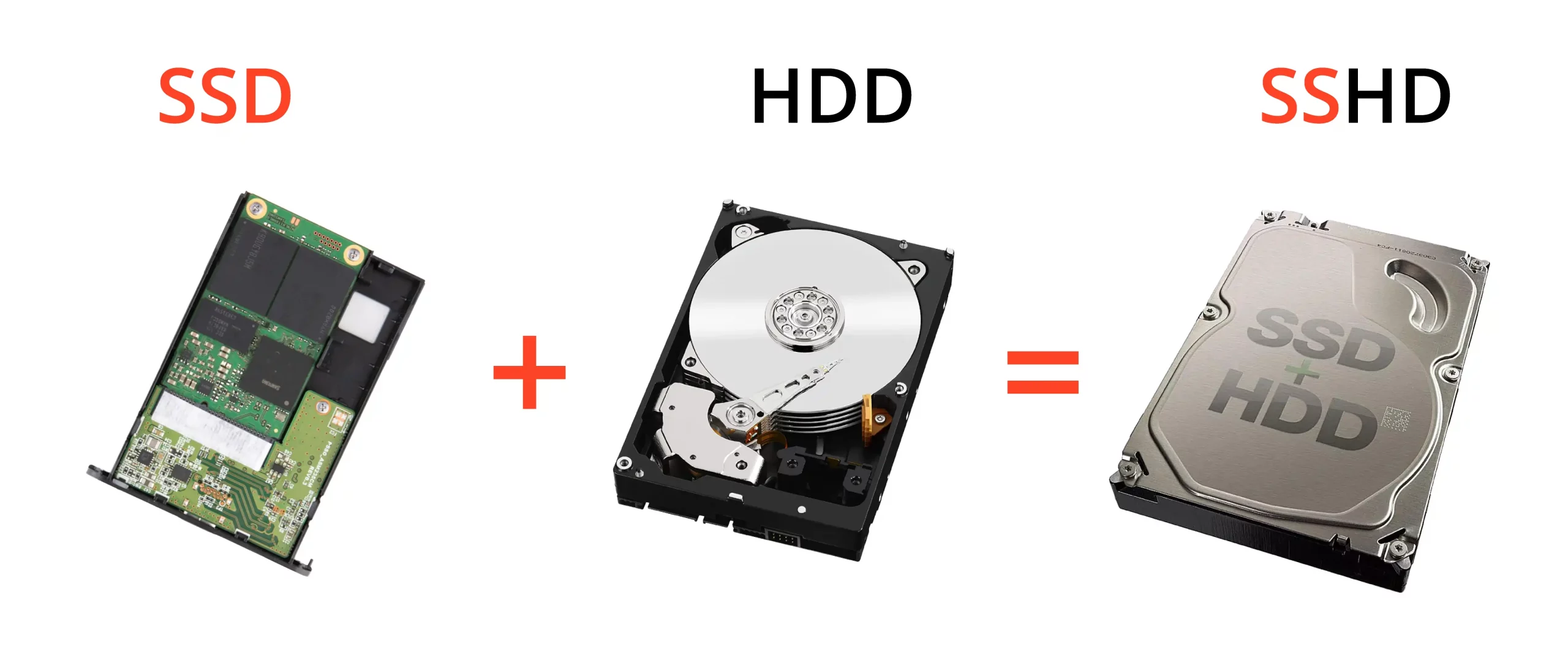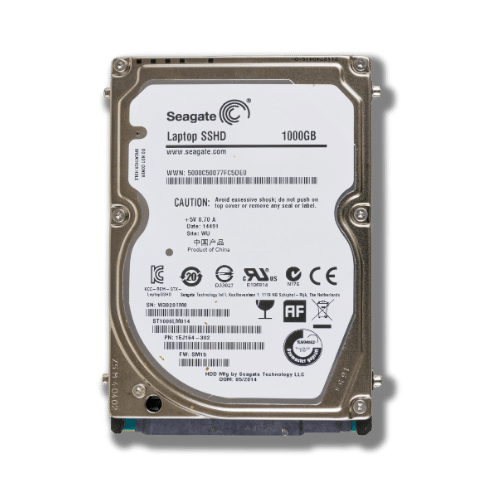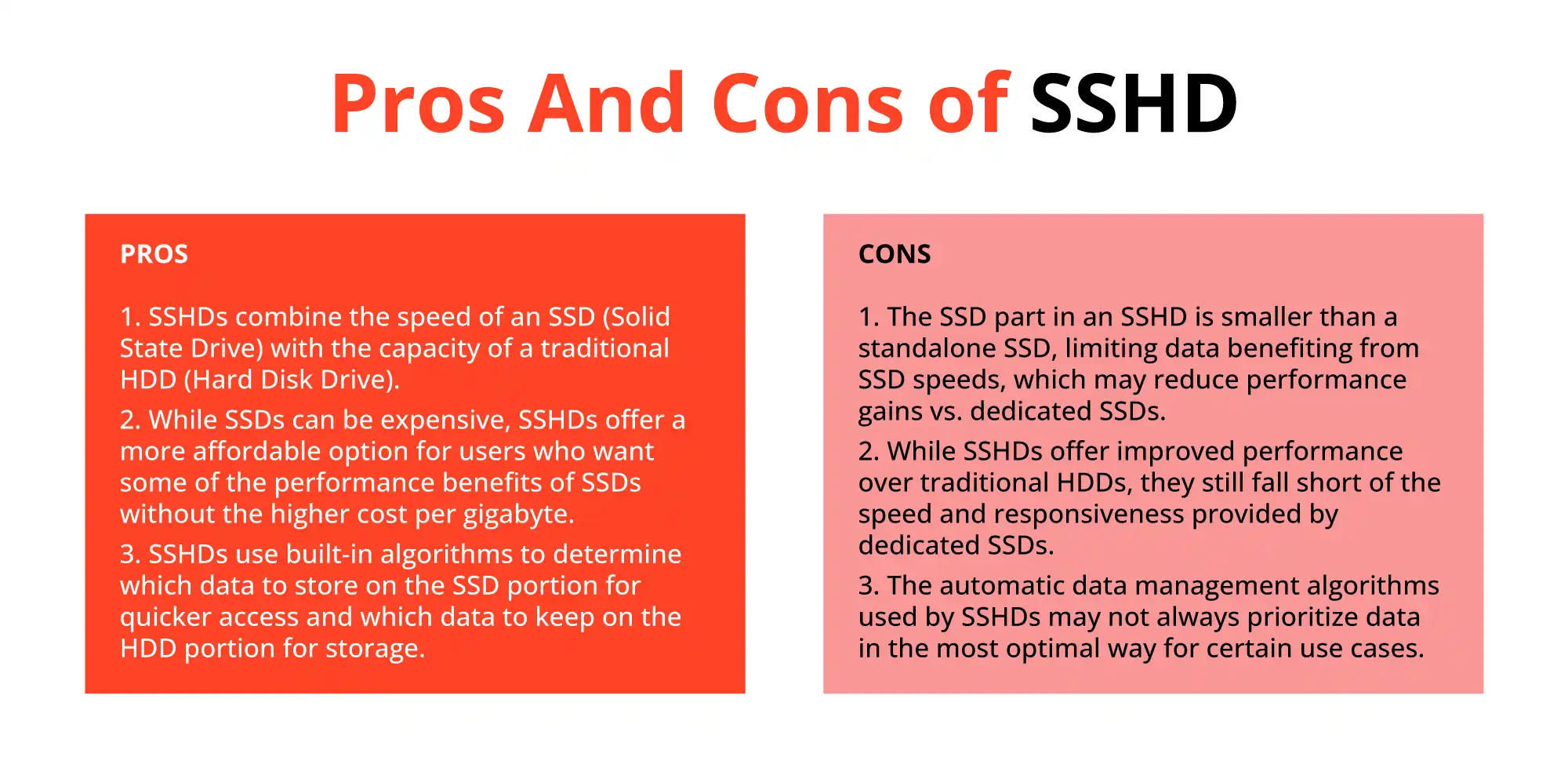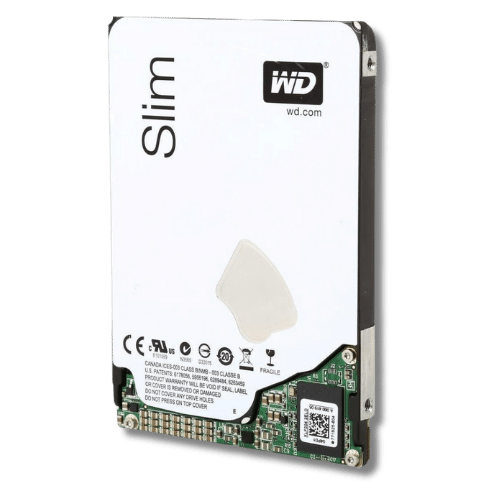What is SSHD? SSHD stands for Solid State Hybrid Drive, combining traditional HDD and SSD technologies for storage. SSHDs are becoming popular in tech for their many benefits. But what is an SSHD, and how do you know if it fits your storage needs? This article explains SSHDs, their advantages and disadvantages, to help you understand hybrid drives.
What is SSHD?
An SSHD is a type of storage drive that uses both HDD and SSD technology to provide users with a balance between speed and capacity. It is a traditional HDD with an added layer of flash memory – similar to the ones used in SSDs. This lets it store often-used data on speedy flash memory while maintaining the HDD’s large storage for less-used data.

How does an SSHD work?
To understand how SSHDs work, think of them as having a sort of built-in intelligence. This intelligence allows the drive to learn which data you access most frequently and then stores this data in the SSD component of the drive. For example, if you often use certain programs or files, the SSHD will store these in the SSD portion, which allows for faster access times compared to traditional HDDs.
Less frequently accessed data remains on the HDD part, ensuring you still benefit from the large storage capacity. This adaptive memory technology enables SSHDs to offer a compromise between the high speed of SSDs and the large storage space of HDDs, improving overall system performance without sacrificing storage capacity.
Advantages of SSHDs
One of the primary advantages of SSHDs is their ability to significantly enhance system performance at a more affordable price point than SSDs.
By storing frequently used files on the speedy solid-state part, SSHDs offer faster boot times, quicker app launches, and more responsive data access, making them a great choice for boosting computer speed affordably.
Furthermore, SSHDs provide larger storage capacities similar to HDDs, enabling users to store vast amounts of data while still enjoying the performance benefits of solid-state technology.

This blend of speed, capacity, and cost-effectiveness makes SSHDs a compelling choice for both general and power users aiming to upgrade their systems.

Disadvantages of SSHDs
Despite the attractive combination of speed and storage capacity that SSHDs offer, there are several disadvantages to consider:
- While SSHDs provide faster performance than traditional HDDs, they still need to catch up to the speed delivered by SSDs, especially in tasks that involve large amounts of data transfer.

- The flash memory component of SSHDs is smaller compared to a full SSD, which means that not all frequently accessed data can benefit from the speed boost. This limitation can result in inconsistent performance, particularly with applications or files not stored in the flash cache.
- The complex architecture of SSHDs can potentially lead to higher failure rates than SSDs due to the mechanical parts inherent in the HDD portion of the drive.
- As SSD prices continue to drop and their capacities increase, the cost advantage of SSHDs becomes less significant, making SSDs a more attractive option for users seeking the best performance.
Is SSHD for you?
While SSHDs offer a balance between speed and cost, there may be better options for some. If you are a heavy user who requires fast and consistent performance, an SSD may be the better choice. However, if you need a large storage capacity at a more affordable cost than SSDs, an SSHD could be the perfect solution. In conclusion, SSHDs offer a unique combination of HDD and SSD technologies, providing users with improved performance and larger storage capacity.
When considering integrating an SSHD into your system, it’s also important to evaluate the risks associated with data loss. To reduce risks, users should regularly back up data and use software to check their drives’ health. If you face data loss on your hybrid hard drive, trust our Hybrid Drive Data Recovery services. We’re experts in SSHD data recovery, blending HDD and SSD tech knowledge to maximize your chances of getting your important files back.
Frequently Asked Questions
How is an SSHD compatible with my computer?
Most SSHDs have the same form factor as traditional HDDs, so they fit in almost any desktop or laptop that allows HDD or SSD upgrades. It’s best to check your computer’s specs for drive size (2.5″ or 3.5″) and interface (SATA) compatibility before buying.
How long does an SSHD last?
The lifespan of an SSHD can vary based on usage, quality, and environmental factors. However, most SSHDs are designed for longevity and can last several years. Regular monitoring and maintenance can extend their life further.
How much faster is an SSHD compared to an HDD?
While the exact speed improvement will vary depending on the specific tasks and the specific models being compared, SSHDs can significantly reduce boot and load times, often by several seconds or more, compared to traditional HDDs. However, they may not be as fast as SSDs, especially for tasks involving continuous large data transfers.
Can SSHDs lose data, and how common is it?
Data loss in SSHDs can happen due to physical damage, firmware issues, or errors. Although SSD technology boosts performance, it doesn’t remove the risk of data loss found in all storage devices. With regular maintenance, this risk can decrease. The HDD part does add a vulnerability, but overall, SSHDs are built to last and be reliable.
What should I do if I experience data loss on my SSHD?
If you experience data loss on your SSHD, stop using the drive right away to prevent further data loss. Avoid DIY recovery attempts, which can worsen the situation. Contact a professional data recovery service skilled in SSHD technology. They possess the necessary tools and expertise to safely retrieve data from the drive’s HDD and SSD components.
How is data recovery performed on an SSHD?
Data recovery on an SSHD uses techniques suited to its hybrid design. Specialists often use software for logical problems, trying to retrieve lost files from the SSD cache and HDD storage. For physical damage, the drive might need an opening in a cleanroom to fix or recover data from its parts. The complexity of SSHDs demands a mixed approach, combining methods for SSD and HDD recovery.
